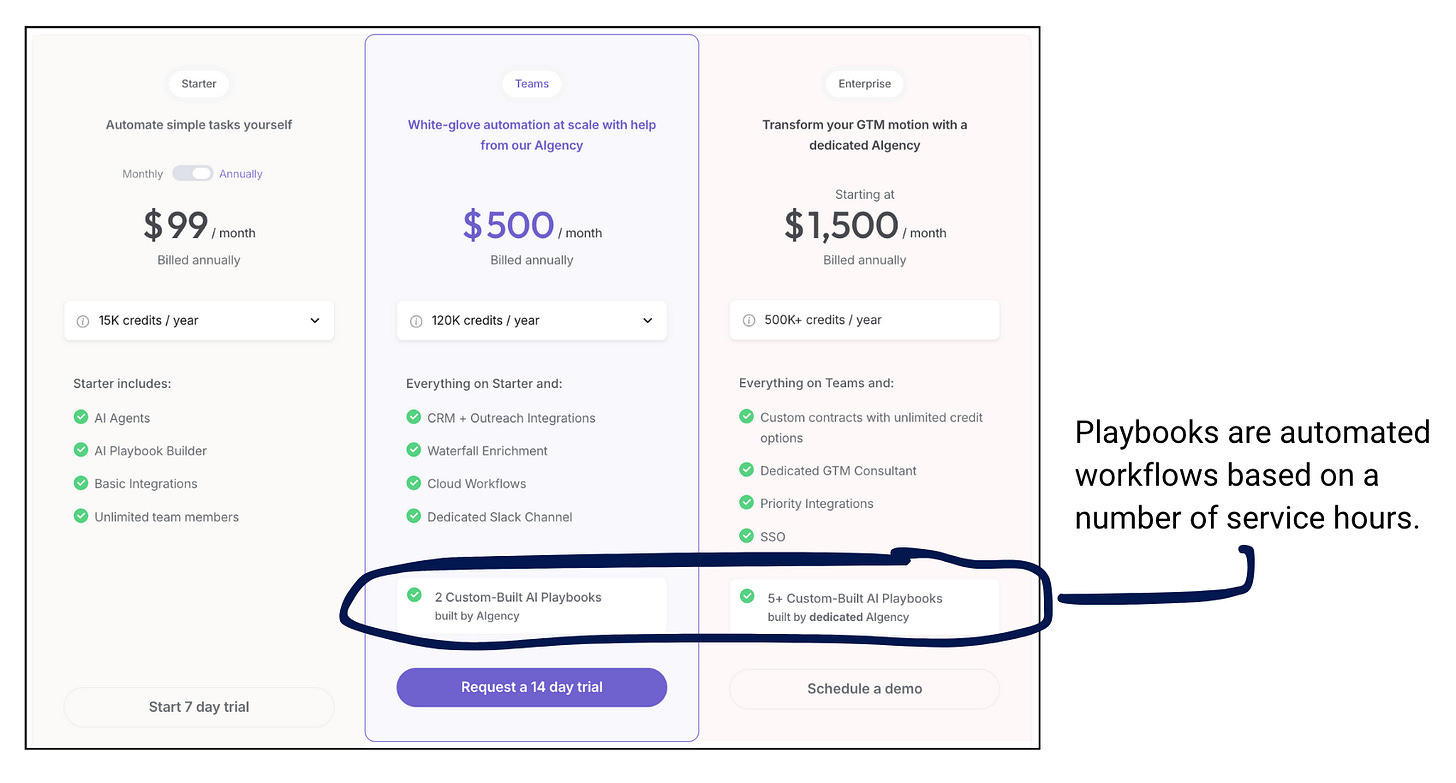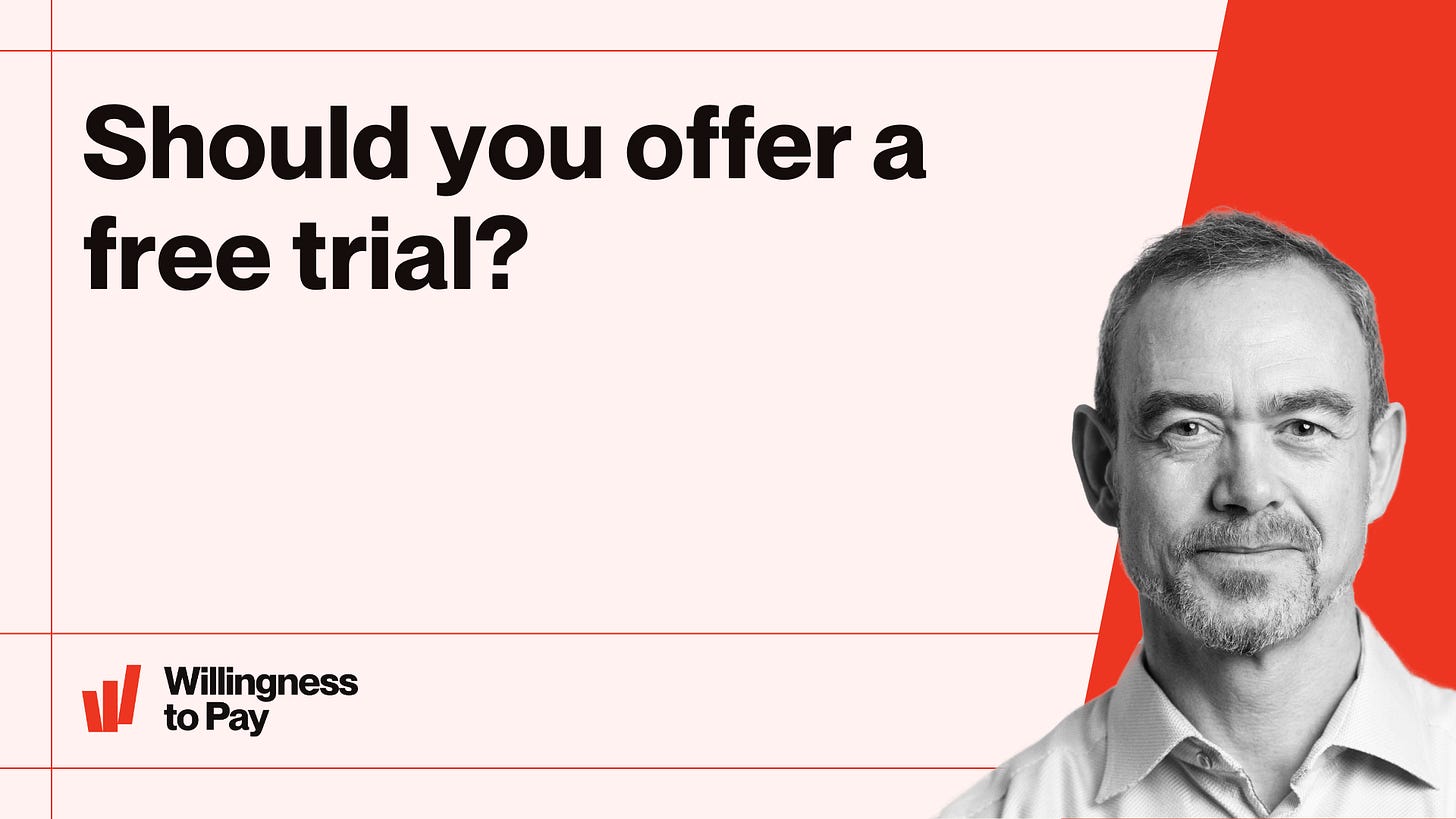How SaaS Companies Win by Packaging Services
Plus: Updates from GitHub and FullStory.
Welcome back to Good Better Best!
Today, we’re digging into how Bardeen, an AI-powered SaaS company, is using professional services to reduce complexity and drive stickiness. Afterwards, Ulrik breaks down key considerations to offering a free trial.
Let’s get to it.
Have a pricing question?
Join the PricingSaaS Community and get an answer within 24 hours.
📰 Pricing News & Updates
GitHub introduced new add ons.
FullStory reorganized its product and plans.
Today’s Post is brought to you by Schematic — The monetization platform built for product & revenue teams.
Schematic gives product, growth, and sales teams the ability to:
Convert free trialers to paid accounts
Drive expansion with triggered paywalls and alerts
Launch & support any pricing model, from seats to credits
Support custom configuration for enterprise deals
Prevent churn with loyalty credits and discounts
All without pulling in engineering.
How to Blend SaaS & Services
Earlier this year, I wrote about one of the themes I’m watching this year, Humans as a Premium Feature. When I saw Bardeen’s Colby Morgan announce a new focus on services in their pricing and packaging strategy — I reached out to get the scoop.
Background
Bardeen was originally positioned as a horizontal AI-automation tool for everyone, but tightened their focus on go-to-market automation when they realized GTM teams were by far their most common use case.
This pivot placed Bardeen in direct competition with other players in the GTM automation space, including Clay. But rather than competing solely on features, Bardeen differentiated by addressing a common pain point: implementation complexity.
The "AIgency" Approach
What makes Bardeen's model particularly interesting is how they've integrated services directly into their pricing tiers. They've created what they call "The AIgency," which provides customers with a set number of service hours included in their subscription.
"We're not going to have it be an add-on, we're not going to have it be an extra services charge. We just include a certain number of scalable hours of support time depending on how big your credit package is, indefinitely," Morgan explained.
This approach represents a fusion of traditional services with modern SaaS pricing:
Base plan customers receive 3 hours of annual service time
Higher tiers receive 5-7 hours annually
These hours help customers build custom "Playbooks" (automated workflows)
The genius of this approach is that it addresses the primary barrier to adoption for complex AI tools: getting started and seeing value quickly.
The Trial Transformation
Perhaps most innovative is how Bardeen has reimagined the traditional SaaS trial:
"We have a guided trial experience. When you become a qualified lead in our sales pipeline, you're assigned to a sales engineer... and they'll guide you through a 14-day trial that automatically rolls into your full agreement. We sign a contract before the 14-day trial, and then after 14 days of AIgency time with a real human helping you, you automatically roll into a full agreement."
Essentially, Bardeen front-loads some of those services hours in the trial to ensure prospects see immediate value. The results?
"We've lost zero of those trials so far. We've won all of them," Morgan told me.
This approach flips the traditional self-service trial on its head. Instead of leaving prospects to figure things out themselves, Bardeen treats the trial as a collaborative implementation period, ensuring customers see value before they're fully committed.
Services as a Negotiation Lever
Beyond improving adoption, Bardeen's service hours serve another strategic purpose: they provide flexibility in deal negotiations without compromising core pricing.
"It's the first variable we negotiate on deals that need negotiation. We don't touch the MRR," Morgan explained. "If somebody wants something more, we'll add a couple service hours to your plan."
This creates a win-win situation: customers get more support to ensure success, while Bardeen preserves its pricing integrity and creates expansion opportunities.
In one case, Bardeen tripled the contract value of a partnership three months into a 12-month contract because the initial service hours helped identify additional use cases that required more credits.
Why Services Will Remain Critical in AI SaaS
What's happening at Bardeen reflects a broader trend in AI-powered SaaS. As tools become more powerful, the bottleneck shifts from what the software can do to whether customers can effectively implement it. Key reasons why services will remain essential:
Customization Complexity: AI tools often require significant customization to deliver maximum value.
Expertise Gap: Many organizations lack internal expertise to maximize AI tools without guidance.
Rapid Evolution: AI capabilities are evolving so quickly that continuous education becomes necessary.
ROI Validation: Services help customers measure and demonstrate return on investment.
Trust Building: Human expertise builds confidence in AI outputs and recommendations.
The Future is Both, Not Either/Or
What Bardeen demonstrates is that the future of AI-powered SaaS isn't about choosing between software or services – it's about thoughtfully combining them.
"Everything's a bit of an estimate," Morgan noted when discussing how they scope service requirements. "The Playbook output estimate is really just a measuring stick for a customer to understand... how many automations am I going to be able to run with the help of the AIgency?"
This approach shifts the conversation from just software costs to business outcomes. When customers focus on what they're trying to achieve rather than just what features they're buying, both the vendor and customer win.
Conclusion: Services as Strategic Advantage
As AI continues to reshape the SaaS landscape, companies that recognize the strategic value of services will likely outperform those clinging to pure self-service models. The most successful AI companies won't be those with the most features, but those that most effectively blend powerful software with the human expertise needed to implement it.
Bardeen's approach – integrating service hours directly into pricing tiers rather than treating them as add-ons – may become increasingly common as more companies recognize that even the most sophisticated AI requires human guidance to deliver its full potential.
In an era where AI can handle increasingly complex tasks, perhaps the most valuable feature isn't the AI itself, but the humans who help you use it effectively.
🎯 Expert Insight
In my years of implementing and optimizing free trials across various software companies, I've found the elements below to be critical for success. Each point represents not just theoretical knowledge, but hard-won insights from both successful implementations and painful failures.
Demonstrating Value: A primary consideration is whether your free trial effectively showcases the value proposition of your product. The trial should allow potential customers to experience the benefits and understand how your software solves their problems.
Commercial Strategy: Understand that a free trial is a commercial feature within your broader product ecosystem. It's a tool in your acquisition strategy.
Differentiation from Freemium: Be clear about the difference between a free trial (limited time access to full or a significant portion of features) and a freemium model (ongoing access to a limited version). Choose the model that best aligns with your acquisition and monetization goals.
Acquisition Goal: Determine if the free trial is a core part of your customer acquisition model. You need to assess whether the free trial leads to a sufficient conversion rate to justify the cost of offering it.
Validation and Feedback ("Quality of the No"): Utilize the free trial period as an opportunity for market validation and to gather feedback. Pay close attention to why users do not convert after the trial ends – this "quality of the no" can reveal issues with your product, packaging, pricing model, or communication. Conducting a postmortem with churned trial users can be particularly insightful.
Integration with Sales Process: The approach to free trials might differ based on your sales process (outbound, inbound, or self-service). For self-service models, free trials are often a critical step before price presentation.
Potential for Discounting: A free trial can also be strategically used as a form of short-duration, time-limited discount, especially for smaller ACV products. It can also be offered as a post-sales tactic to prevent churn due to lack of adoption by effectively "resetting the clock" for the customer.
Duration: The optimal duration of your free trial should be long enough for users to experience the core value but not so long that it delays their decision to pay.
After implementing and refining free trial strategies for dozens of clients, I've observed that the most successful ones treat these considerations not as a checklist but as an ongoing dialogue with their market—constantly testing, measuring, and adapting to find the perfect balance between value demonstration and conversion optimization.
How we can help when you’re ready
Got questions? Join the free PricingSaaS Community to get fast answers from pricing leaders.
Leveling up? Check out our Resource Center for links to pricing and packaging research, webinars, and our free online course.
Need help? Our SaaS Pricing Assessment delivers a clear roadmap to smarter pricing and packaging in 30 days.






This post provides great ideas on how to monetize professional services. This was relevant during the SaaS days and just as true in today's AI-agent driven market.